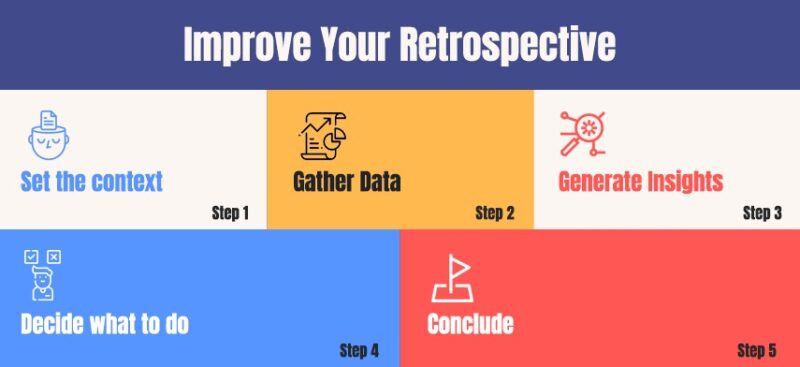
- Piyush Rahate
- Dec 8th 2020
As a Scrum Master, what has been your biggest struggle? I struggled to create a culture of continuous improvement within the team. And you might think what is to struggle there, run a Sprint Retrospective and get your improvements, so easy or is it?
Let me ask a few questions/statements and see if any of it resonates with you.
- Does your Retrospective follows (all the time) the template
- What went well?
- What did not go well?
- What are the improvements?
- There is a huge list of identified improvements, but nothing is implemented.
- Team members typically during the Retrospective are not energized or just go through the motions of it.
- After the retrospective, no one knows what the improvement work on which the team was supposed to work.
- Typically, team members do not have any context about what we will do in the Sprint Retrospective besides answering the questions mentioned above; i.e., they do not understand the event’s purpose.
- You haven’t yet heard about the “Prime Directive” for Sprint Retrospective.
What is Sprint Retrospective:
When we think of the word “retrospect,” it means to do a review of a past course of events, which is the base for a Sprint Retrospective. In a Sprint Retrospective, we review the past Sprint and its events, intending to identify how we can make the upcoming Sprint better.
From the recent version of the Scrum Guide (scrum guide 2020):
The purpose of the Sprint Retrospective is to plan ways to increase quality and effectiveness. A few more details: A Sprint Retrospective is the last event on the Sprint, time-boxed for 3 hours or less for a month Sprint. During the event, the Scrum Team collaborates and reflects on the past Sprint concerning people, process, tools, interactions, and the Definition of Done. The Scrum Team also identifies how to improve and make the next sprint effective and meaningful.
Tips to Improve Your Retrospective
Step 1: Set the Context
This helps everyone to know the purpose of the Retrospective and create an environment where everyone feels comfortable to speak. It also allows us to set the rules, guidelines, and approach for the retrospective. We can also highlight any specific challenge that the team has brought up and would like to address.
How I do it:
- Explicitly talk about the Prime Directive for Sprint Retrospective.
- Layout the rules such as - timebox for the event, everyone to respect the opinions of others.
Step 2: Gather Data
Now that we have set the context, the next step is to gather some data by reflecting on the Sprint gone by. This helps us to make fact-based, empirical decisions.
How I do it:
- Walkthrough the burn-down and probe what does it tell?
- Look into quality metrics, technical debt, etc.
- Look at planned versus actual PBIs completed.
- I also ask subtle questions like - how did everyone feel during the Sprint? - allow them time to consider the question and share silently.
Step 3: Generate Insights
With the data assembled, we start generating insights, correlating causes and effects. What are the typical patterns or anti-patterns that we observed in the Sprint? How has it impacted our effectiveness? And so on.
How I do it:
- 5 Why analysis is a great way to generate insights
- I use another method to divide a sheet of paper into 6 columns marked as - Start, Stop, Less, More, Keep, and WIIFM (What’s In It For Me?)
Step 4: Decide what to do
This about identifying your actionable items, which would help the team to improve its efficacy.
How I do it:
- List down all the possible improvements/experiments that we can run in the next sprint.
- Use the “Dot Voting” technique to order them.
- The one with the highest votes finds a way into our Sprint Backlog.
- The team decides the possible course of action to implement the improvement.
- Ask team members to volunteer to be accountable for the improvement.
Step 5: Conclude
This is the last part of the retrospective, where we tie up all the loose ends. This part should be utilized to appreciate the team's efforts, reminding everyone of the actionable improvement, who would be accountable for it, and capturing all these learnings and insights. We usually also take quick feedback on the retrospective itself.
How I do it:
- Start by re-affirming the prime directive.
- A note of thank you.
- Ask if anyone wants to appreciate their team members.
- Quick feedback on the retrospective so that I can improve it for the next session.
- Wrap up with reiterating the improvement and person accountable for it.









